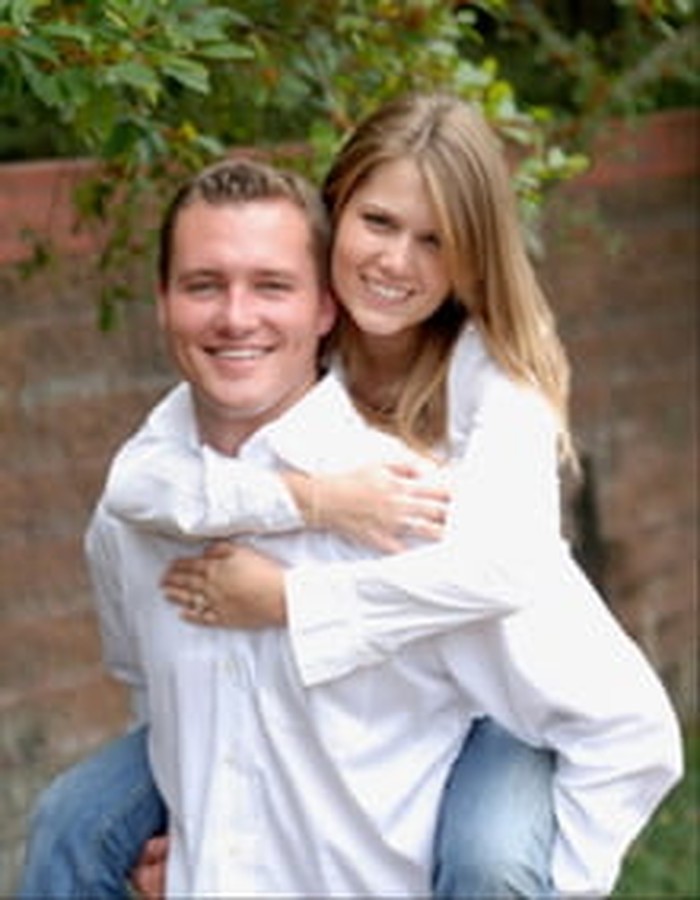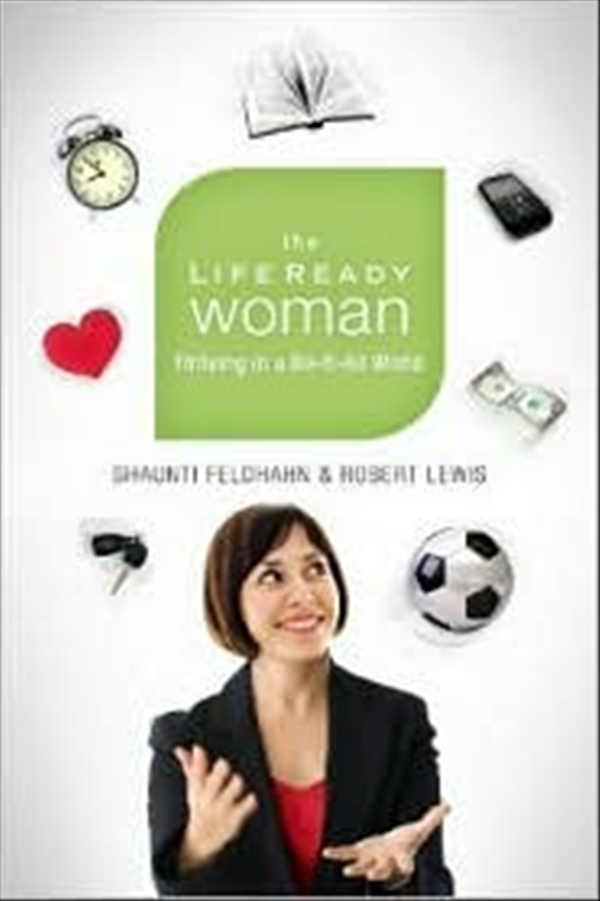The Wonderful Differences Between Men and Women
- Shaunti Feldhahn & Robert Lewis Authors, The Life Ready Woman
- Published Feb 28, 2012

The following is an excerpt from Shaunti Feldhahn and Robert Lewis' new book The Life Ready Woman (B&H Publishing Group, 2011).
There is a distinct and clear difference in how men and women are designed. Every branch of science from neuroscience to anthropology now confirms something the Bible has laid out all along. Of course, we believe that those differences are good and there for a reason: God has an intended framework for what a man should be and what a woman should be. And every part of our identities will be affected by how we live out that design.
Most of us today would agree that yes, men and women are different, and move on. But without a clear biblical definition of manhood and womanhood, without a clear vision of how they are different and why, both men and women have trouble separating life-giving pursuits from mistakes and mirages. There is nothing specific to aspire to, strive for, or check ourselves against. “Am I a good woman?” “Did I behave like a man today?” If God really has created us male and female for a purpose, those are absolutely essential questions. And the only place the life-giving, encouraging answers can be found is in a biblical understanding of maleness and femaleness.
We learn in Genesis that of all the things God created, none is more meaningful than humanity. Men and women stand as equals at the apex of God’s created order. In Genesis 1: 27 we read, “God created man in His own image, in the image of God He created him; male and female He created them.” Here we learn that women and men were designed to reflect God’s image over the rest of creation. But just as important is what lies at the heart of this design. Of all things it is gender: male and female.
The thing we must first decide is whether we’re going to believe this central tenet. This is a crucial first turn in the maze, the divide for living life. Did God create us special, and is one’s gender purposeful, or are we all merely a product of random chance? Our decision here has huge ramifications for how we proceed in life and view masculinity and femininity. Of course, you can choose to believe that everything exists by pure accident and that nothing has a fixed purpose. If that’s the case, then you are left to create your own definition of manhood and womanhood. On the other hand, if God created the universe as Genesis says He did and you believe it, then you find yourself called to embrace a breathtaking dignity and fixed meaning to your life and your womanhood. You are purposeful, designed, intentional, and God has put you here because He is out to achieve something in the gender He wrapped you in. The same is true for men.
We'll delve into the specific callings that are unique to women in the next chapter, but for now let's take a look at what makes a man a man and what makes a woman a woman.
Biblical Manhood
How does the Bible define a man, a real man? We find that a vision of manhood is inspired by history’s two most influential men. Both are called Adam the Hebrew word for man. Both have left indelible marks on the human race. At times Scripture plays them up as opposites – two men who made radically different choices and pursued equally different lifestyles. But when they are brought together as men, they provide us with a way to envision and define biblical manhood.
The first of these two Adams is the Adam of Genesis. He was divinely fitted for masculine success. Strong, intelligent, favored by God – the whole earth was his to rule and subdue. He was set for a great adventure. All he had to do was get three things right:
1. Adam had a will to obey.
2. Adam had work to do.
3. Adam had a woman to love and care for.
These were Adam’s responsibilities as a man. But we know from Genesis 3 that Adam failed on each of these counts in one fell swoop. Standing under the boughs of a forbidden tree, he refused to obey God’s will and he “checked out” instead of doing the hard work of manly leadership; in utter selfishness he refused to protect his wife from the serpent’s seductive advances and then blamed her. His mistakes come down to one simple theme: he lost his masculine focus, and without it he became passive. Sadly, this passive masculinity is part of the sin that has been passed down through the ages.
Generations later we find a second Adam, literally, “the second man” – Jesus. The Gospels make clear that Jesus is God the Son, the Creator of the universe, and humanity’s only hope for salvation. But they also make sure we know Jesus was a man: flesh and blood, mind and heart – like every other man who ever lived. And as history’s second Adam, Jesus unveiled a new vision of masculinity even as His life paralleled the life of the first Adam with the same three responsibilities:
1. Jesus had a will to obey.
2. Jesus had a work to do.
3. Jesus had a woman to love and care for.
Like Adam, Jesus the man was obligated to submit to the will and work of God. He also had a woman to love. Scripture calls her the bride of Christ. She is the church – every Christian throughout the generations. So how did Jesus’ new masculinity supersede Adam’s failed one?
As with Adam, Jesus’ greatest test took place in a garden. Would He allow Himself to be betrayed, captured, beaten, crucified, and separated from the Father to pay the price for the sins of everyone else? Or would he slip away into the darkness and protect Himself, as the human part of His nature was screaming at Him to do? It was the moment for both His life and His masculinity. All of His God-given responsibilities came together during a night of grief and betrayal. Set before Him was God’s way, and, of course, the other option we all have… my way. Jesus’ understanding of His humanity and masculinity called Him to submit to His Father’s will even though it would cost Him unspeakable agony and death. Adam’s example, on the other hand, offered Him another option: choose selfishness and passivity over responsibility.
You know how the story ends. To paraphrase Romans 5: 15, through one man (Adam) the world cascaded into death, but through a second man (Jesus), the way of salvation and new life was opened to all. So while Adam failed in his manhood test in the Garden of Eden, Jesus triumphed with His in the Garden of Gethsemane. “Not as I will, but as You will,” He cried (Matt. 16: 39). Rejecting passivity, He selflessly loved His bride and bravely took a stand for His responsibilities even though it cost Him everything. Jesus obeyed the Father’s call because He trusted the Father’s promise that the suffering of the cross was a necessary part of the journey to greater glory. “For the joy set before Him,” Jesus endured the cross, Hebrews 12:2 says. In the end Jesus’ courageous leadership showed all men what the first man’s didn’t: God’s will, however difficult it may appear or feel at any given moment, ultimately results in a richer, more abundant life and greater reward. This was the vision Jesus held into in modeling a thoroughly masculine life.
So it’s in bringing Adam and Jesus together that we discover true biblical manhood. By noting the parallels between these two towering masculine figures, their points of departure, and the different responses each had to his specific manhood responsibilities, we can create a biblical definition of manhood:
A real man rejects passivity, accepts responsibility, leads courageously, and expects God’s greater reward.*
Biblical Womanhood
Does Scripture provide for women a pattern for envisioning biblical womanhood like that provided by comparing Adam and Jesus? If Jesus is the second Adam, can we find any woman present in the Bible as a sort of second Eve – as a good role model to offset the bad? Yes – Mary.
Just as Eve was in the middle of the high drama opening the Old Testament, Mary, a young virgin from Nazareth, stood in the spotlight in the powerful events opening the New Testament. Eve’s foolish choices were used to introduce sin and death into the world. Conversely, we can see how Mary’s courageous choices played a central role in helping to bring forgiveness and life back to the world.
Mary characterized exemplary virtue and bold, extraordinary faith. She actually lived the life the first Eve abandoned. But even more important for our purposes, Mary’s life, when contrasted with Eve’s, helps us put together a biblical definition of authentic womanhood. Looking at these two women, three significant issues stand out that serve as building blocks for constructing a vision of authentic womanhood.
First, both Mary and Eve were offered the chance to accept or reject God’s Word. God had told Adam that no one could eat the fruit of this one tree that would give human beings supernatural knowledge. Yet Eve then listened to the serpent when he questioned what God had said to Adam. And Eve responded by choosing to believe the deceiver rather than embracing God’s callings and the goodness already enjoyed from Him. Mary, however, was a different story. She was confronted with an almost unbelievable situation that – from a worldly perspective – might have seemed to ruin her life. God had made her pregnant before marriage! But He gave her His promise that this pregnancy of bearing the Son of God would make her life special too. It was an awkward, overwhelming situation. After this encounter Mary could have easily panicked and submitted to an abortion (readily available in that era) or to a secret divorce; she could have fled, leaving God’s calling far behind. But Mary instead showed remarkable faith. She stood her ground and chose to embrace God’s calling on her life. Eve foolishly shunned God’s word, but Mary embraced it.
Next we see the actions that flowed from each woman’s belief. In Eve’s case it can be summarized in two words: she ate (Gen. 3: 6). In this one act of willful disobedience, Eve abandoned not only God but also the Core Callings He had set forth to bless her life: to be a partner and helpmate to Adam, to nurture the next generation, and to be a kingdom builder. She abandoned those real, vibrant callings for the alluring mirage of grander things. Conversely, Mary’s wise choice of trusting God’s Word led to a completely different set of actions. She didn’t strike out on her own or seek to end her pregnancy. In fact, she did just the opposite. In spite of the fear she undoubtedly felt at times, she drew closer to God, cherished her pregnancy, carried through with her marriage to Joseph, and courageously embraced God’s astounding calling to raise His son!
Finally, we look at each woman’s expectations. Both Mary and Eve expected good to come from their beliefs and actions. Eve obviously envisioned even greater personal fulfillments and adventures than God’s callings could provide. Her imagination, no doubt, ran wild. What new freedoms will being like God give me? How much greater will I be? How much happier? It was the life she’d been missing, though before that fateful moment she likely hadn’t though anything was missing. But now, caught up in the serpent’s words, it all sounded too good to pass up. So Eve went for the life she believed could offer her more than God had given. And indeed she found more – more pain, sorrow, and regret than she knew existed.
Mary expected great reward too, but in her case it circled back to what God promised her. We admire the courageous obedience she displayed, especially when we know the major payoff was still many hard years away. But Mary’s faith held firm to God’s Word. Amazingly, she exulted in God’s goodness to her before any of the really good results came to pass. In Luke 1: 48 – 49 she said, “For he has been mindful of the humble state of his servant. From now on all generations will call me blessed, for the Mighty One has done great things for me – holy is his name” (NIV).
Mary was celebrating God’s goodness at a time when all she could reasonably see was the scandal that would soon visit her. She was about to be a social outcast and a cause for gossip. Yet with the eyes of faith, she trusted God and believed her life would be blessed with His best in spite of the hardship. Nine months later, that’s exactly what she got.
By contrasting these two women’s responses to God, to temptation, and to what each considered the better life, we find a biblical definition of authentic womanhood that offers direction to any woman’s life:
A biblical woman embraces God’s callings, chooses wisely, lives courageously, and expects God’s greater reward.
Next week read Part II on biblical marriage.
Shaunti Feldhahn is a former Wall Street analyst, best-selling author (For Women Only), national speaker, and regular commentator in the media. She and her husband live with their two children in Atlanta, Georgia.
Robert Lewis is the visionary leader behind the Life Ready series of video studies. He is a pastor, best-selling author (Rocking the Roles: Building a Win-Win Marriage), and the founder of the popular Men's Fraternity Bible study movement. He and his wife have four grown children and live in Little Rock, Arkansas.



















